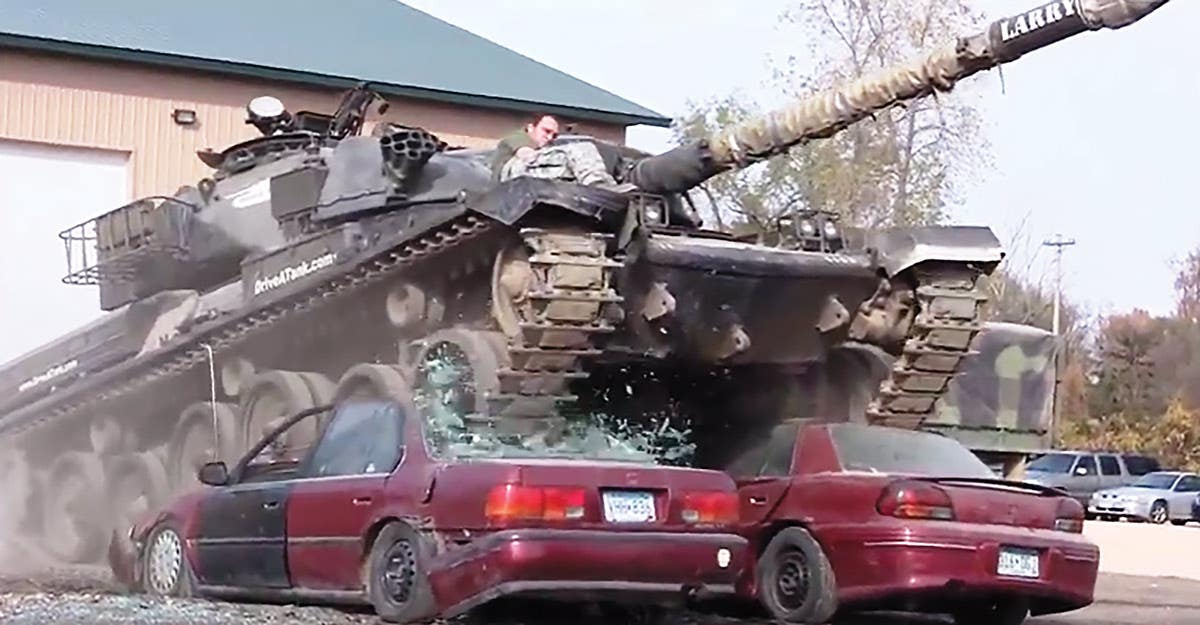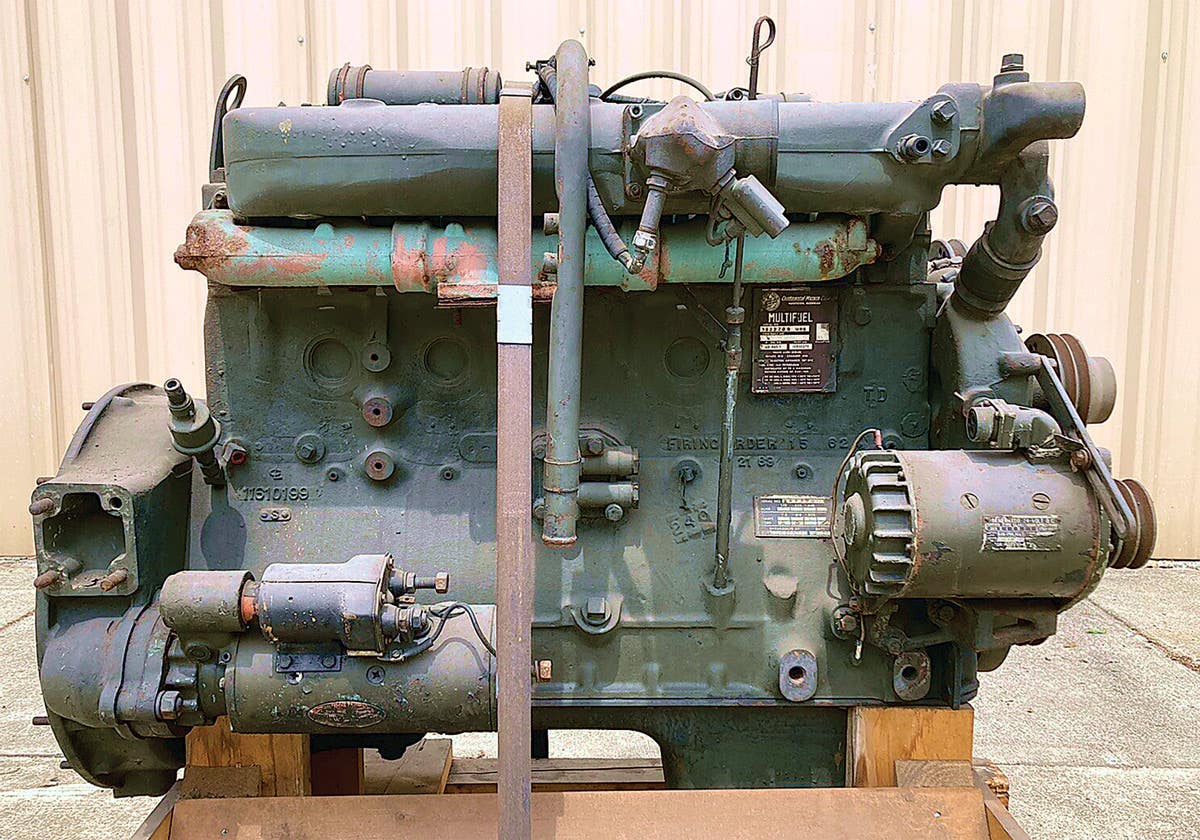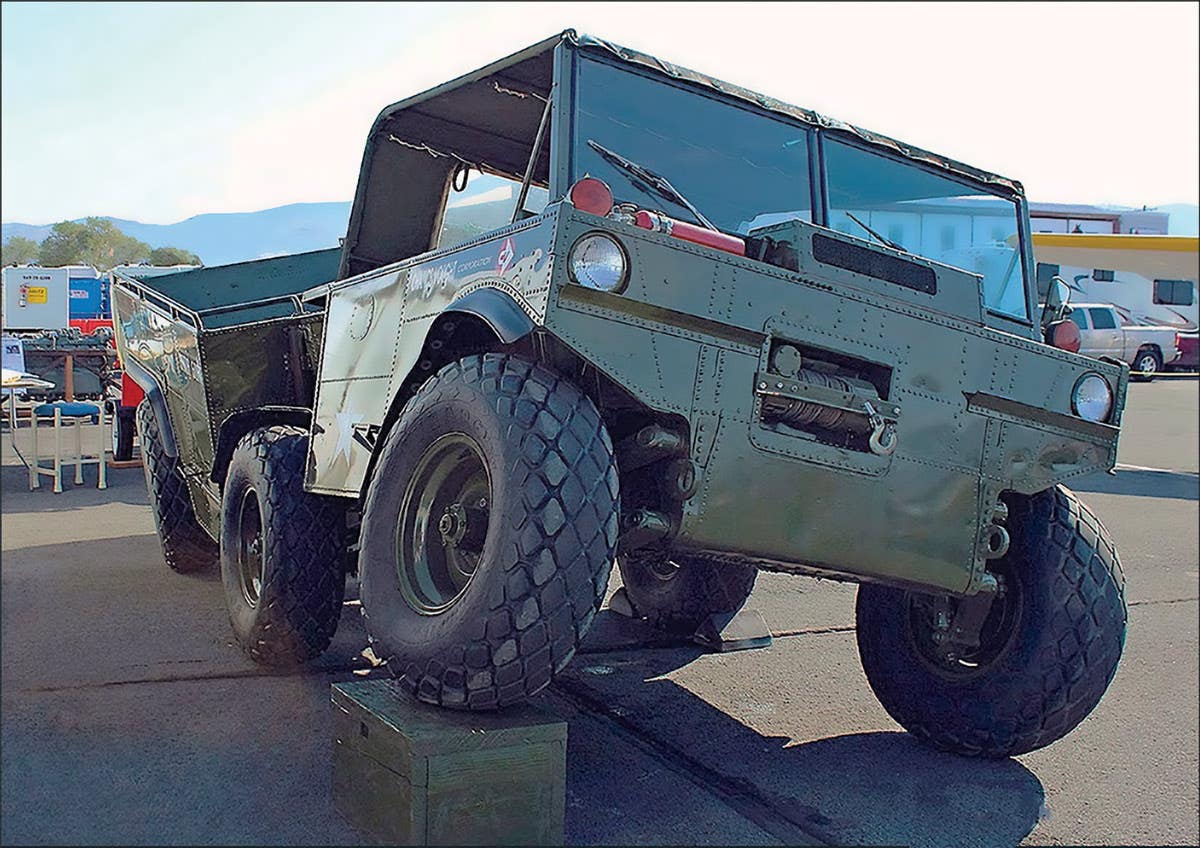TIPPERS! Troop Trucks That Dump
Destruction–the very heart of warfare–is the precursor to clean up, and construction. Dump trucks play a pivotal role in all three of these tasks.
Destruction--the very heart of warfare--is the precursor to clean up, and construction. Dump trucks play a pivotal role in all three of these tasks. During WWII, the most commonly found dump truck in the American army inventory was this one, based on the classic GMC CCKW 2-1/2 ton 6x6 chassis. National Archives
Typical of Engineers' trucks, this CCKW dump is equipped with a PTO-driven front mounted winch. This truck has also been fitted with a ring mount for an anti-aircraft machine gun. Because Engineers were often working near the front lines, such armament was commonplace. National Archives
The CCKW dump included provisions for side boards, troop seats and cargo canvas--allowing the vehicle to serve as general cargo or personnel transport when not being used in the dump role. This dual-use design was continued into the 1980s. National Archives
A folding guard protected the cab from falling debris when the truck was being loaded from overhead, as seen here. A divider was standard equipment in the truck bed. When transporting dense material it was to be raised, as in this 1944 European Theater photo, to prevent to overloading of the truck and lift mechanism. U.S. Army Engineer School History Office
Dump trucks were also used for the transport of floats during bridging operations. These trucks are moving forward in preparation of crossing the Danube in April 1944. U.S. Army Engineer School History Office
Once in position, the dump beds were raised to launch the inflatable floats. This concept was revived decades later with the M821 bridge truck. National Archives
During WWII, airfields were built globally--and became prime targets as well. Troops are using this CCKW dumper to repair a damaged airfield in Belgium. National Archives
Because Engineers and their dump trucks were often critical to the advancement of allied forces, it was decided to modify some of the CCKW dumps for airborne transport. Shown here was the style created by GM's Holden, Australia facility. National Archives
In the Pacific, the leap-frog pattern of bridging the ocean with airfields meant dump trucks worked virtually around the clock. The CCKW-based truck could not carry the loads demanded by the coral islands and feverish pace of work. The larger, four-ton Diamond T 6x6, shown in the background, was the preferred vehicle in this theater. In fact, the larger size became the standard by which postwar dump designs were measured. National Archives
Initially, Diamond T dump trucks had a closed cab, as seen here. The more robust construction of the Diamond T, particularly relative to its wheelbase, meant that a dump bed divider was not required for these vehicles. National Archives
Even the Diamond T was not big enough to satisfy the Engineers' demands. Photographed during the Tinian airfield expansion, these trucks have Pierced Steel Planking (PSP) strips added to the sides of their beds to increase the amount of quarried coral they could transport. National Archives
The big Diamond Ts were also used as cargo trucks to transport the PSP. The PSP was crucial for forming durable, but temporary, runways. National Archives
These Diamond Ts were photographed in ine for their loads of asphalt on Guam. On this Marshalls island, these trucks moved 300,000 tons of crushed rock. Mixed with 400,000 gallons of oil, troops used this rock carve out the first phase of the North airfield. Open cab models of the four-ton truck can be seen in this photo. National Archives
At the opposite end of the spectrum from the Diamond T was the 1-1/2-ton Chevrolet dump truck. Two Chevys are shown here working in New Guinea during 1943.
David Doyle's earliest published works were occasional articles in enthusiast publications aimed at the historic military vehicle restoration hobby. This was a natural outlet for a guy whose collection includes several Vietnam-era vehicles such as M62, M123A1C, M35A2, M36A2C, M292A2, M756, and an M764.
By 1999, his writing efforts grew to include regular features in leading periodicals devoted to the hobby both domestically and internationally, appearing regularly in US, English and Polish publications.
In 2003, David received his a commission to write his first book, The Standard Catalog of U.S. Military Vehicles. Since then, several outlets have published more than 100 of his works. While most of these concern historic military hardware, including aircraft and warships, his volumes on military vehicles, meticulously researched by David and his wife Denise, remain the genre for which he is most recognized. This recognition earned life-time achievement in June 2015, when he was presented Military Vehicle Preservation Association (MVPA) bestowed on him the coveted Bart Vanderveen Award in recognition of “...the individual who has contributed the most to the historic preservation of military vehicles worldwide.”
In addition to all of publishing efforts, David is the editor of the MVPA’s magazine, History in Motion, as well as serving as the organization’s Publications Director. He also maintains a retail outlet for his books online and at shows around the U.S.







